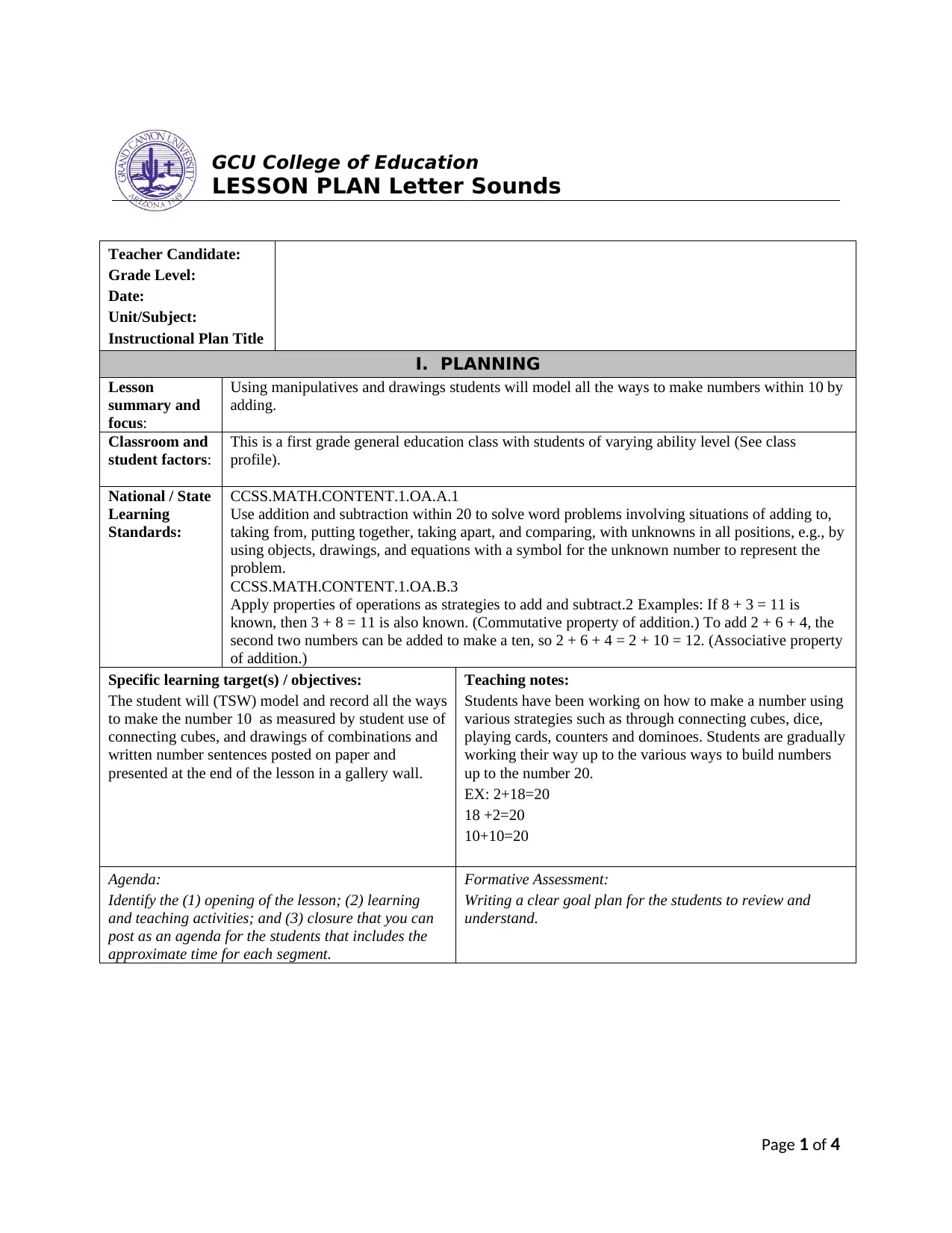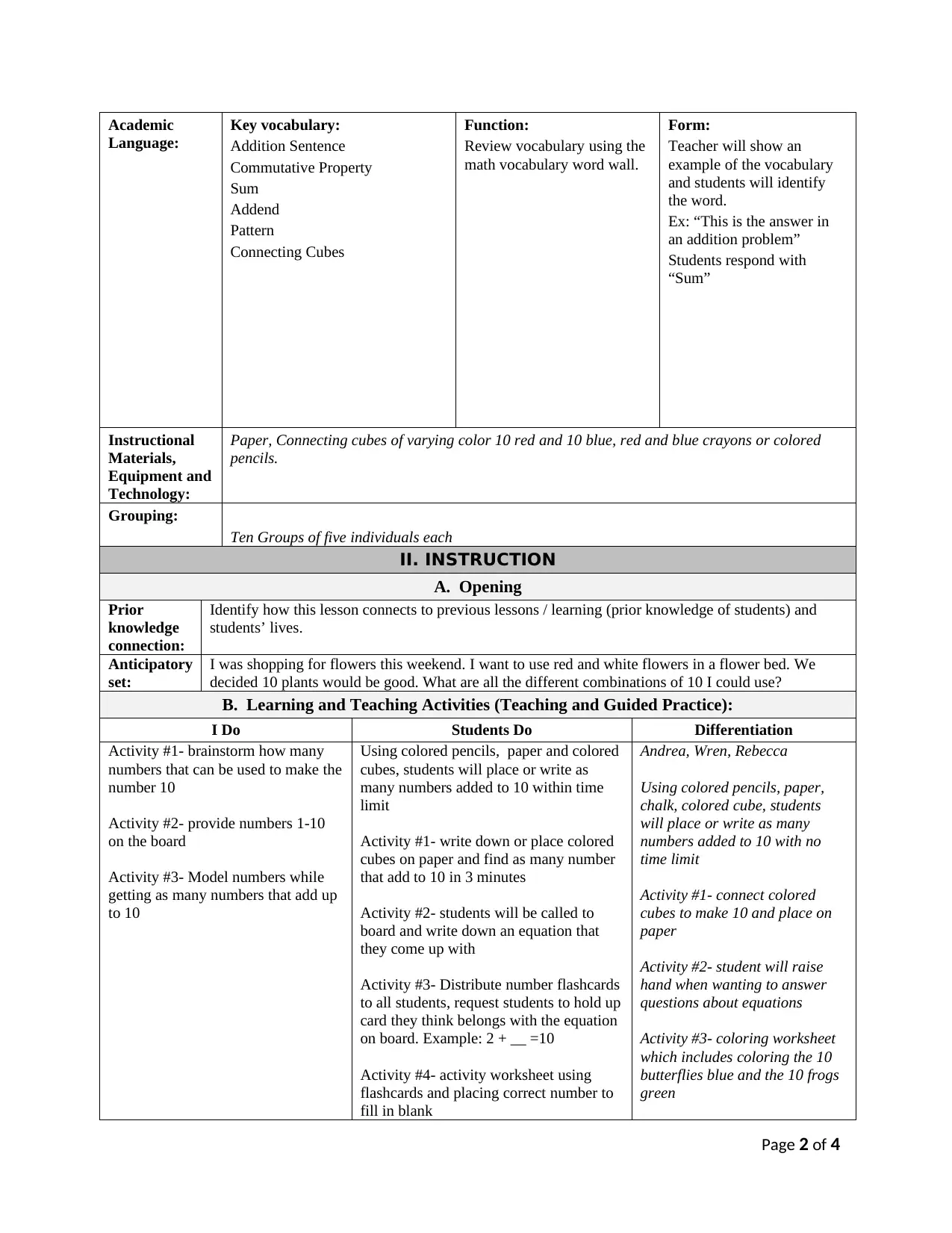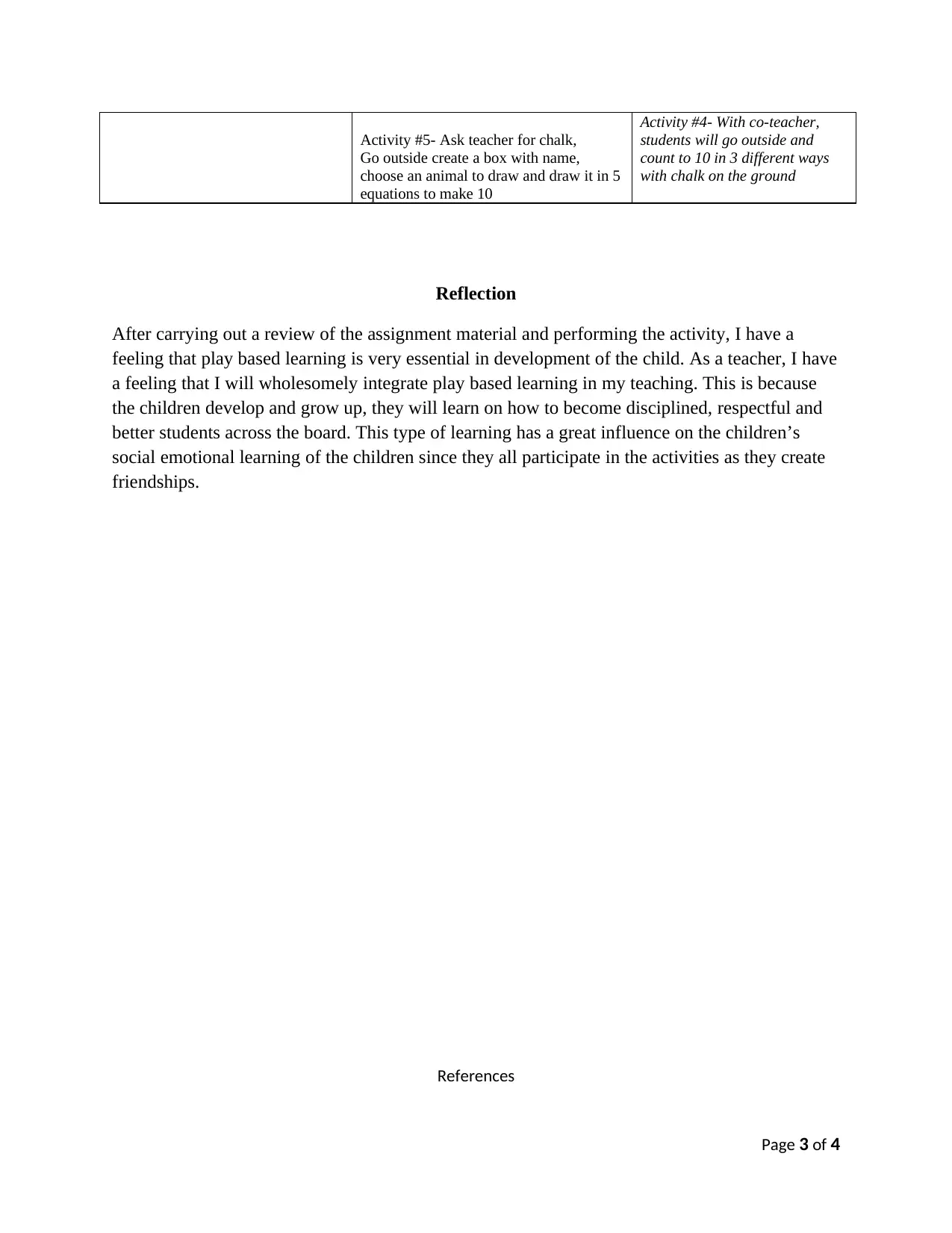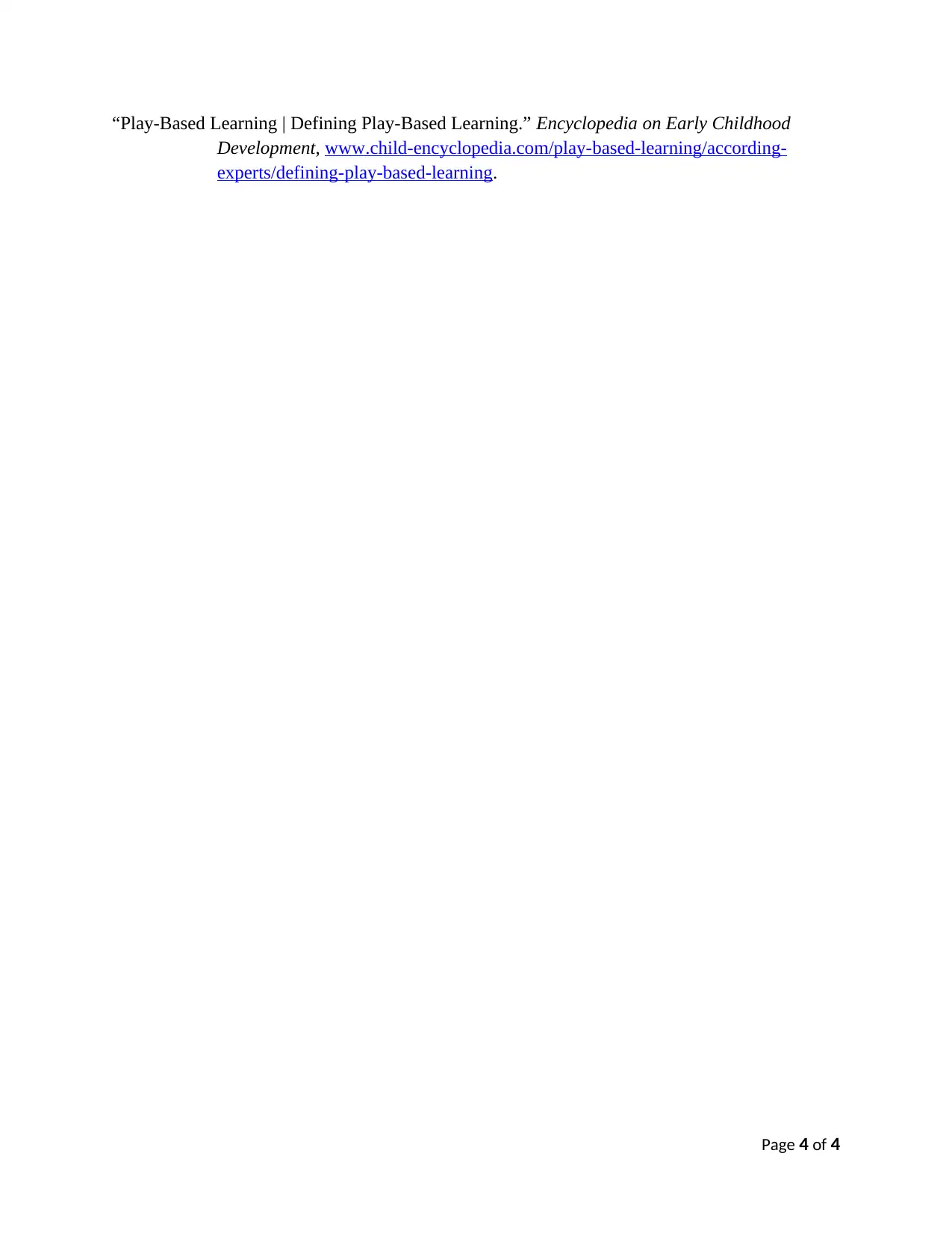GCU College of Education Letter 2022
VerifiedAdded on 2022/09/12
|4
|990
|27
AI Summary
Contribute Materials
Your contribution can guide someone’s learning journey. Share your
documents today.

GCU College of Education
LESSON PLAN Letter Sounds
Teacher Candidate:
Grade Level:
Date:
Unit/Subject:
Instructional Plan Title
I. PLANNING
Lesson
summary and
focus:
Using manipulatives and drawings students will model all the ways to make numbers within 10 by
adding.
Classroom and
student factors:
This is a first grade general education class with students of varying ability level (See class
profile).
National / State
Learning
Standards:
CCSS.MATH.CONTENT.1.OA.A.1
Use addition and subtraction within 20 to solve word problems involving situations of adding to,
taking from, putting together, taking apart, and comparing, with unknowns in all positions, e.g., by
using objects, drawings, and equations with a symbol for the unknown number to represent the
problem.
CCSS.MATH.CONTENT.1.OA.B.3
Apply properties of operations as strategies to add and subtract.2 Examples: If 8 + 3 = 11 is
known, then 3 + 8 = 11 is also known. (Commutative property of addition.) To add 2 + 6 + 4, the
second two numbers can be added to make a ten, so 2 + 6 + 4 = 2 + 10 = 12. (Associative property
of addition.)
Specific learning target(s) / objectives:
The student will (TSW) model and record all the ways
to make the number 10 as measured by student use of
connecting cubes, and drawings of combinations and
written number sentences posted on paper and
presented at the end of the lesson in a gallery wall.
Teaching notes:
Students have been working on how to make a number using
various strategies such as through connecting cubes, dice,
playing cards, counters and dominoes. Students are gradually
working their way up to the various ways to build numbers
up to the number 20.
EX: 2+18=20
18 +2=20
10+10=20
Agenda:
Identify the (1) opening of the lesson; (2) learning
and teaching activities; and (3) closure that you can
post as an agenda for the students that includes the
approximate time for each segment.
Formative Assessment:
Writing a clear goal plan for the students to review and
understand.
Page 1 of 4
LESSON PLAN Letter Sounds
Teacher Candidate:
Grade Level:
Date:
Unit/Subject:
Instructional Plan Title
I. PLANNING
Lesson
summary and
focus:
Using manipulatives and drawings students will model all the ways to make numbers within 10 by
adding.
Classroom and
student factors:
This is a first grade general education class with students of varying ability level (See class
profile).
National / State
Learning
Standards:
CCSS.MATH.CONTENT.1.OA.A.1
Use addition and subtraction within 20 to solve word problems involving situations of adding to,
taking from, putting together, taking apart, and comparing, with unknowns in all positions, e.g., by
using objects, drawings, and equations with a symbol for the unknown number to represent the
problem.
CCSS.MATH.CONTENT.1.OA.B.3
Apply properties of operations as strategies to add and subtract.2 Examples: If 8 + 3 = 11 is
known, then 3 + 8 = 11 is also known. (Commutative property of addition.) To add 2 + 6 + 4, the
second two numbers can be added to make a ten, so 2 + 6 + 4 = 2 + 10 = 12. (Associative property
of addition.)
Specific learning target(s) / objectives:
The student will (TSW) model and record all the ways
to make the number 10 as measured by student use of
connecting cubes, and drawings of combinations and
written number sentences posted on paper and
presented at the end of the lesson in a gallery wall.
Teaching notes:
Students have been working on how to make a number using
various strategies such as through connecting cubes, dice,
playing cards, counters and dominoes. Students are gradually
working their way up to the various ways to build numbers
up to the number 20.
EX: 2+18=20
18 +2=20
10+10=20
Agenda:
Identify the (1) opening of the lesson; (2) learning
and teaching activities; and (3) closure that you can
post as an agenda for the students that includes the
approximate time for each segment.
Formative Assessment:
Writing a clear goal plan for the students to review and
understand.
Page 1 of 4
Secure Best Marks with AI Grader
Need help grading? Try our AI Grader for instant feedback on your assignments.

Academic
Language:
Key vocabulary:
Addition Sentence
Commutative Property
Sum
Addend
Pattern
Connecting Cubes
Function:
Review vocabulary using the
math vocabulary word wall.
Form:
Teacher will show an
example of the vocabulary
and students will identify
the word.
Ex: “This is the answer in
an addition problem”
Students respond with
“Sum”
Instructional
Materials,
Equipment and
Technology:
Paper, Connecting cubes of varying color 10 red and 10 blue, red and blue crayons or colored
pencils.
Grouping:
Ten Groups of five individuals each
II. INSTRUCTION
A. Opening
Prior
knowledge
connection:
Identify how this lesson connects to previous lessons / learning (prior knowledge of students) and
students’ lives.
Anticipatory
set:
I was shopping for flowers this weekend. I want to use red and white flowers in a flower bed. We
decided 10 plants would be good. What are all the different combinations of 10 I could use?
B. Learning and Teaching Activities (Teaching and Guided Practice):
I Do Students Do Differentiation
Activity #1- brainstorm how many
numbers that can be used to make the
number 10
Activity #2- provide numbers 1-10
on the board
Activity #3- Model numbers while
getting as many numbers that add up
to 10
Using colored pencils, paper and colored
cubes, students will place or write as
many numbers added to 10 within time
limit
Activity #1- write down or place colored
cubes on paper and find as many number
that add to 10 in 3 minutes
Activity #2- students will be called to
board and write down an equation that
they come up with
Activity #3- Distribute number flashcards
to all students, request students to hold up
card they think belongs with the equation
on board. Example: 2 + __ =10
Activity #4- activity worksheet using
flashcards and placing correct number to
fill in blank
Andrea, Wren, Rebecca
Using colored pencils, paper,
chalk, colored cube, students
will place or write as many
numbers added to 10 with no
time limit
Activity #1- connect colored
cubes to make 10 and place on
paper
Activity #2- student will raise
hand when wanting to answer
questions about equations
Activity #3- coloring worksheet
which includes coloring the 10
butterflies blue and the 10 frogs
green
Page 2 of 4
Language:
Key vocabulary:
Addition Sentence
Commutative Property
Sum
Addend
Pattern
Connecting Cubes
Function:
Review vocabulary using the
math vocabulary word wall.
Form:
Teacher will show an
example of the vocabulary
and students will identify
the word.
Ex: “This is the answer in
an addition problem”
Students respond with
“Sum”
Instructional
Materials,
Equipment and
Technology:
Paper, Connecting cubes of varying color 10 red and 10 blue, red and blue crayons or colored
pencils.
Grouping:
Ten Groups of five individuals each
II. INSTRUCTION
A. Opening
Prior
knowledge
connection:
Identify how this lesson connects to previous lessons / learning (prior knowledge of students) and
students’ lives.
Anticipatory
set:
I was shopping for flowers this weekend. I want to use red and white flowers in a flower bed. We
decided 10 plants would be good. What are all the different combinations of 10 I could use?
B. Learning and Teaching Activities (Teaching and Guided Practice):
I Do Students Do Differentiation
Activity #1- brainstorm how many
numbers that can be used to make the
number 10
Activity #2- provide numbers 1-10
on the board
Activity #3- Model numbers while
getting as many numbers that add up
to 10
Using colored pencils, paper and colored
cubes, students will place or write as
many numbers added to 10 within time
limit
Activity #1- write down or place colored
cubes on paper and find as many number
that add to 10 in 3 minutes
Activity #2- students will be called to
board and write down an equation that
they come up with
Activity #3- Distribute number flashcards
to all students, request students to hold up
card they think belongs with the equation
on board. Example: 2 + __ =10
Activity #4- activity worksheet using
flashcards and placing correct number to
fill in blank
Andrea, Wren, Rebecca
Using colored pencils, paper,
chalk, colored cube, students
will place or write as many
numbers added to 10 with no
time limit
Activity #1- connect colored
cubes to make 10 and place on
paper
Activity #2- student will raise
hand when wanting to answer
questions about equations
Activity #3- coloring worksheet
which includes coloring the 10
butterflies blue and the 10 frogs
green
Page 2 of 4

Activity #5- Ask teacher for chalk,
Go outside create a box with name,
choose an animal to draw and draw it in 5
equations to make 10
Activity #4- With co-teacher,
students will go outside and
count to 10 in 3 different ways
with chalk on the ground
Reflection
After carrying out a review of the assignment material and performing the activity, I have a
feeling that play based learning is very essential in development of the child. As a teacher, I have
a feeling that I will wholesomely integrate play based learning in my teaching. This is because
the children develop and grow up, they will learn on how to become disciplined, respectful and
better students across the board. This type of learning has a great influence on the children’s
social emotional learning of the children since they all participate in the activities as they create
friendships.
References
Page 3 of 4
Go outside create a box with name,
choose an animal to draw and draw it in 5
equations to make 10
Activity #4- With co-teacher,
students will go outside and
count to 10 in 3 different ways
with chalk on the ground
Reflection
After carrying out a review of the assignment material and performing the activity, I have a
feeling that play based learning is very essential in development of the child. As a teacher, I have
a feeling that I will wholesomely integrate play based learning in my teaching. This is because
the children develop and grow up, they will learn on how to become disciplined, respectful and
better students across the board. This type of learning has a great influence on the children’s
social emotional learning of the children since they all participate in the activities as they create
friendships.
References
Page 3 of 4

“Play-Based Learning | Defining Play-Based Learning.” Encyclopedia on Early Childhood
Development, www.child-encyclopedia.com/play-based-learning/according-
experts/defining-play-based-learning.
Page 4 of 4
Development, www.child-encyclopedia.com/play-based-learning/according-
experts/defining-play-based-learning.
Page 4 of 4
1 out of 4
Related Documents
Your All-in-One AI-Powered Toolkit for Academic Success.
+13062052269
info@desklib.com
Available 24*7 on WhatsApp / Email
![[object Object]](/_next/static/media/star-bottom.7253800d.svg)
Unlock your academic potential
© 2024 | Zucol Services PVT LTD | All rights reserved.





